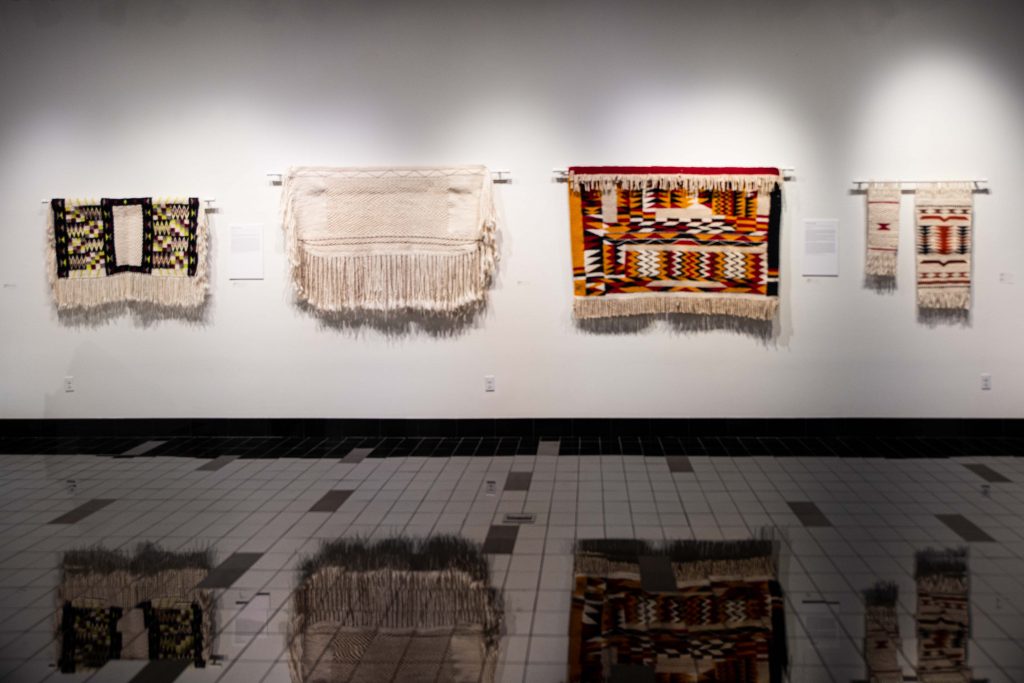“A Weaver’s Voice,” an exhibition of Native American art within the Leonor R. Fuller Gallery at South Puget Sound Community College is a celebration of wool weaving within Coast Salish communities. Through the art of weaving, fibers are intertwined and unique patterns begin to form on the loom. As individual strands take shape into one cohesive piece, so do connections between the weaver, recipient and greater community.
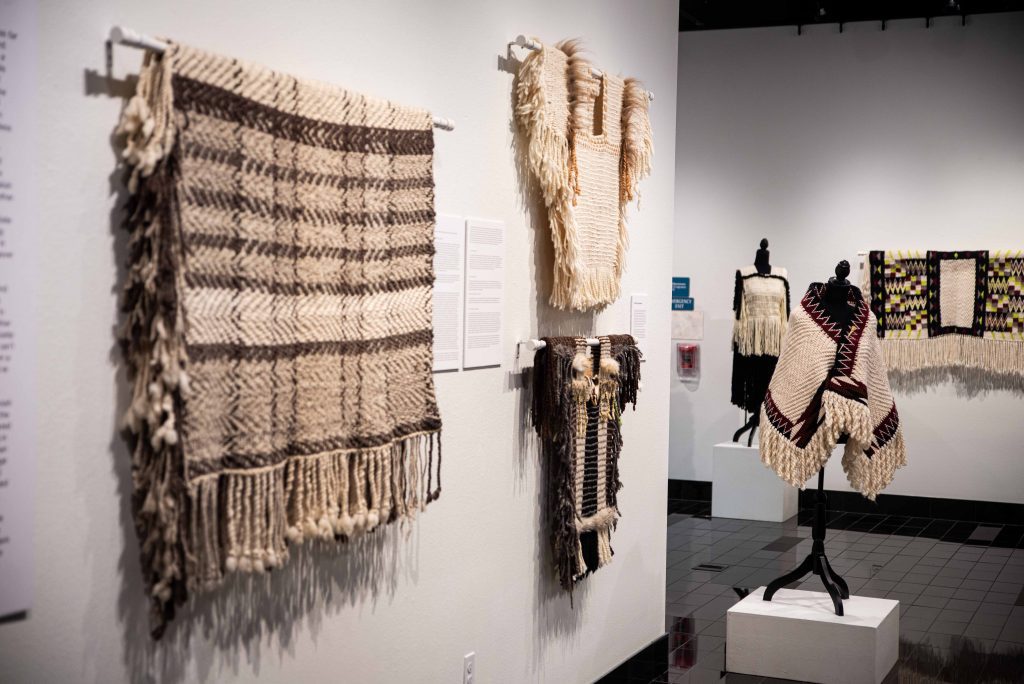
“A Weaver’s Voice” displays historical and modern garments, blankets and other woven artwork from British Columbia to the Puget Sound region. Running from November 7 to December 9, “A Weaver’s Voice” is curated by Selena Kearney, a student at The Evergreen State College. Kearney was drawn to curate this exhibition through her experience as a visual artist and through her studies at Evergreen’s Paimārire Fiber Arts Studio.
In addition to curating this exhibition, Kearney conducted interviews with many of the exhibition’s artists, allowing the viewer to not only take in each piece that is on display, but also to learn a greater history and significance behind weaving practices in Coast Salish communities. The pieces themselves also help to tell the story of Coast Salish wool-weaving tradition and how the art form has been kept alive by artists across multiple generations. Kearney said that this exhibition allows for connection between individual weavings and across Coast Salish communities.
“You’re seeing a historical number of weavings in one place that span from Squamish, BC all the way to Skokomish,” said Kearney. “And you have historical works as well as contemporary works that are in conversation with each other. And it also will give an insight into the new way to view weaving as a unique art form. An art form that connects people, and it brings Salish communities together.”
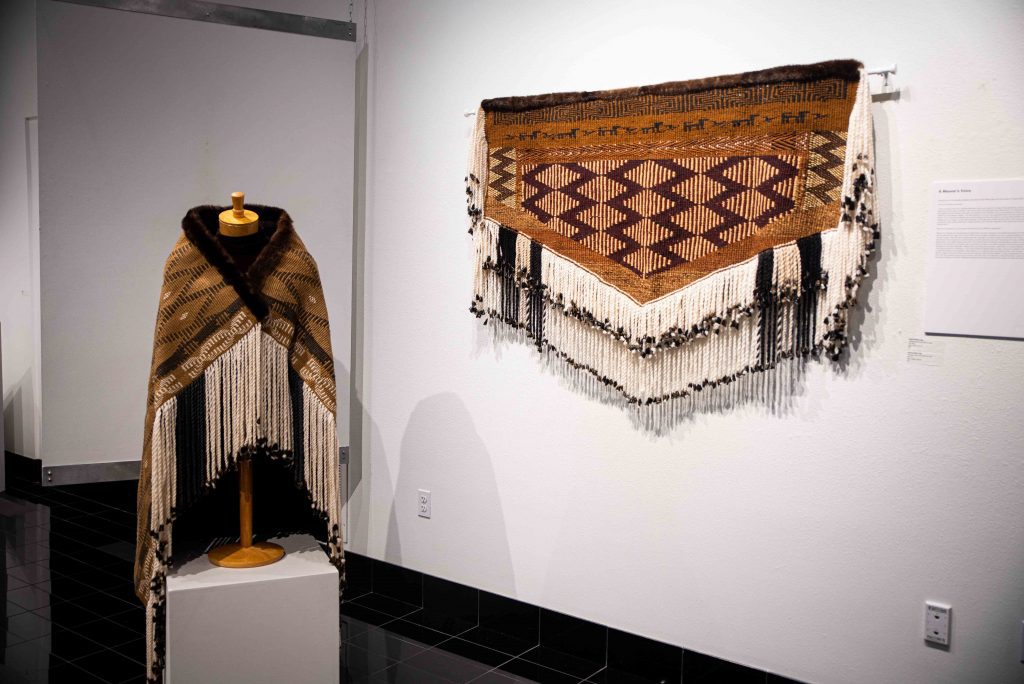
Showcasing a diverse range of artwork, the Leonor R. Fuller Gallery at SPSCC is part of SPSCC’s greater commitment to the local creative community. Sean Barnes, gallery coordinator, said there are about nine exhibitions at the gallery each year that center around student and community artists. And for the past 14 years, there has been an annual tradition to host a Native American art exhibition focusing on the art of Coast Salish communities and other indigenous communities across the region.
“SPSCC sits on tribal land,” said Barnes. “We sit on Squaxin and Nisqually land. And the exhibition is also an opportunity for emerging and experienced artists to build in their curatorial interest or to continue and expand their career. And it’s also about highlighting and lifting up the community. So, there are a lot of makers that don’t show their work beyond the context of most venues with the tribes. So, having the opportunity to be in a gallery context, in an academic institution, and to have that kind of exposure…to open that space up and to hold the space for folks to gather and come together with their work. It’s a really great opportunity.”
Kearney is currently studying visual arts at The Evergreen State College. In addition to her work in photographic art, Kearney has also been working with Dr. Susan Pavel, a weaver and adjunct faculty at Evergreen, within the college’s Paimārire Fiber Arts Studio. Over the past year, Kearney has started to learn the art of weaving, while also working as a teaching assistant for Pavel. At the same time, Kearney has been conducting more in-depth research on historical woven blankets. Kearney said “A Weaver’s Voice” was formed as a capstone project through her work at Evergreen.
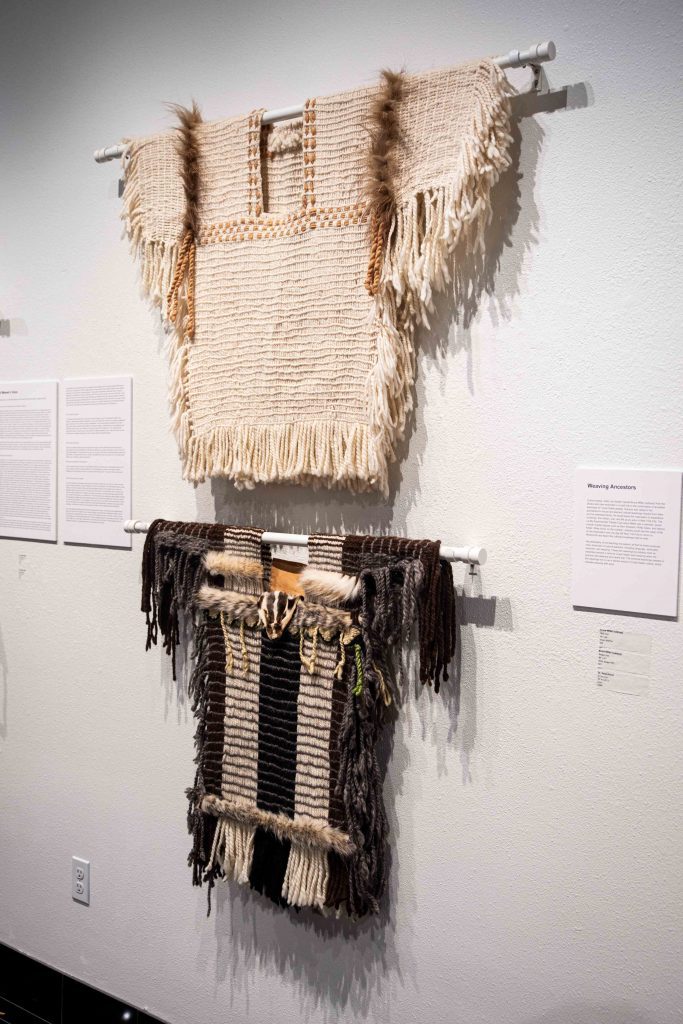
“A Weaver’s Voice” includes the work of fiber artists across multiple generations, including pieces from Bruce Miller (subiyay), and Bill and Fran James, all of whom have emerged as important figures in the Coast Salish weaving tradition.
“Those three individuals are really considered like weaving ancestors,” said Kearney. “That they carried the knowledge and so it’s precious to have those items in the gallery.”
The exhibition displays two historical pieces from Miller, “Wolf Vest” and “Badger Vest.” “Wolf Vest” includes a base of cream-color wool, with tan accents lining the neckline and chest of the garment. Fringe lines the sides and the hemline of the vest and wolf fur is fixed at the shoulder of the garment. “Badger Vest” includes thick vertical stripes of brown, cream and black wool, intersected by thin horizontal stripes of gray-brown wool. The vest is accented by fringe at shoulders, sides and hemline and badger pelt at the chest and hemline.
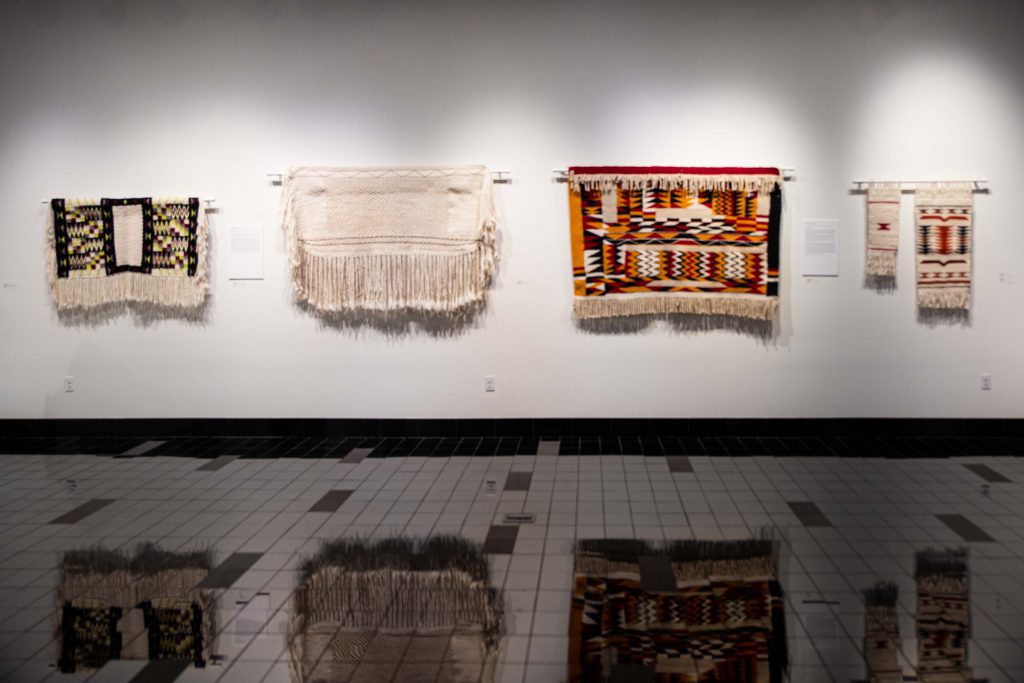
These two pieces are representative of a time when the art form of Coast Salish weaving was in a state of hibernation, said Kearney. Miller was an experienced weaver and artist from Skokomish, but had spent time away from home as he continued his education and career. At one time, Miller was living in New York City and was a part of the La Mama Experimental Theater Club. Holding knowledge about language, religious ceremonies, weaving and other art forms, Miller decided to leave New York for his home of Skokomish, to help pass these practices onto new generations.
The exhibition also displays pieces that span multiple generations. Debra Sparrow, from Musqueam in British Columbia, is an experienced weaver with work that has been displayed across the region, including at the Burke Museum in Seattle and The Royal BC Museum. Sparrow’s “Reconciliation Blanket,” a part of the exhibition, is also set to be displayed by the Vancouver School Board. Sparrow first became interested in weaving through her grandfather, after asking him about his history as a weaver. Sparrow’s grandfather explained that he was a weaver, but he never passed the tradition down, because he thought the new generation wouldn’t have a use for the art form. Learning this inspired Sparrow to learn and resurrect the art of weaving.
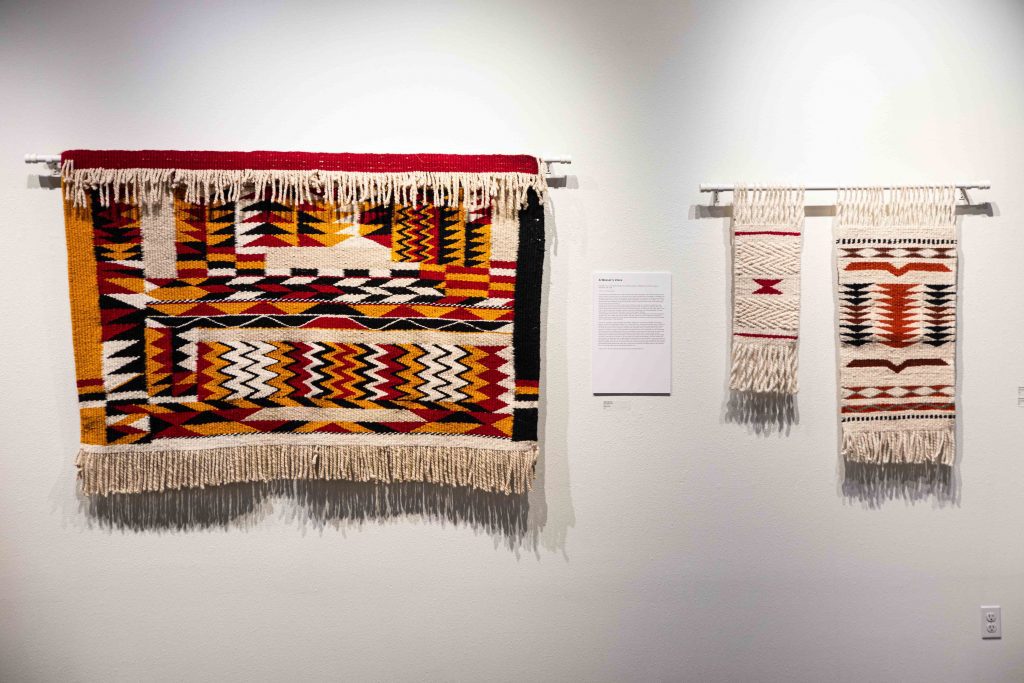
“There was an 80-year break in her history where that art form and that ceremonial act had stopped,” said Kearney. “And so she picked it back up and did so with a force. So she has done a lot of public speaking. She speaks really forcefully about what weaving has done for her in her community.”
Kearney said that Sparrow learned weaving techniques from fragments of the past and has continued to pass on the art form to future generations. In the exhibition, Sparrow’s “Reconciliation Blanket” is displayed alongside the work of her daughter, Aileen Sparrow and grandson, Isaiah Baker Sparrow. In addition to multiple generations of the Sparrow family on display, the work of Debra’s weaving student, Atheana Picha, is also included in the exhibition.
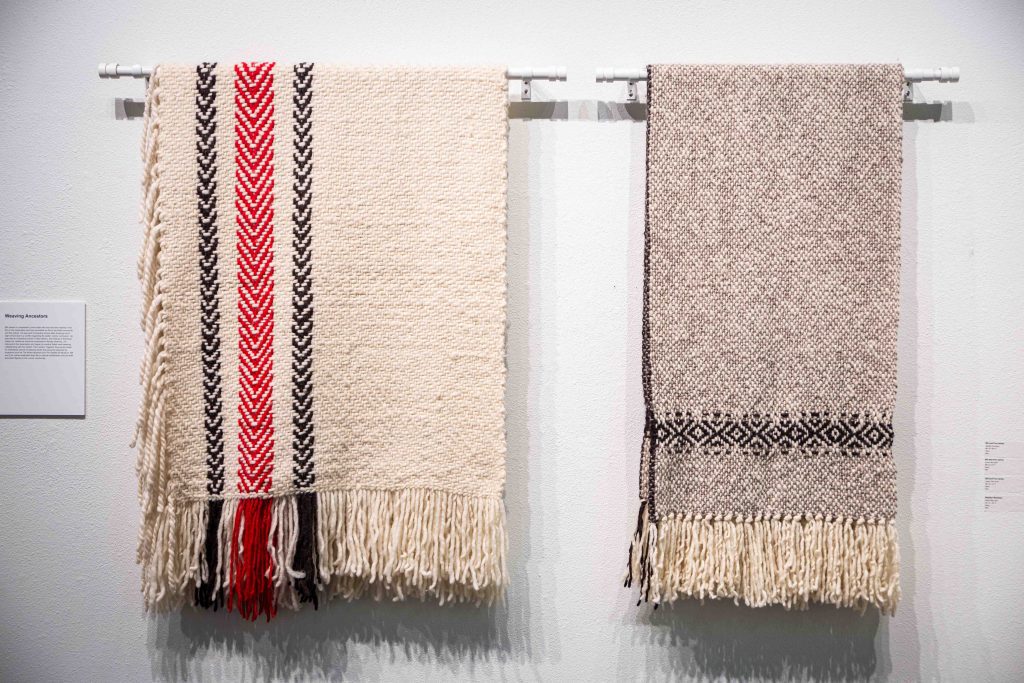
“We have three generations of Sparrows in the show,” said Kearney. “Which is just spectacular because it sort of speaks to the resilience after that break. And a continuation of the artform that’s so central to Coast Salish communities, that it sort of continues on.”
As “A Weaver’s Voice” opens to the public, it is a unique opportunity to view a variety of Coast Salish weavings in one place. It is also an opportunity to learn about the history and context behind each woven art piece and how the weaving practice has been kept alive through the years. Gallery visitors can learn more about the special significance held by each piece, whether made for ceremonial purposes, or for a specific person as they reached a milestone or a new phase in life. “I think it’s inspiring because we live in such a disconnected world that a lot of times when people make these blankets, they make them for someone that they love, and it’s to help them transform into another stage of life,” said Kearney. “And that’s not something that we value often in our world today. So you can come and learn about the weavers and their processes and ceremonial blankets and why it’s the foundation of Coast Salish communities.”
WHAT
A Weaver’s Voice – Coast Salish Wool Weavings
WHERE
The Leonor R Fuller Gallery
South Puget Sound Community College in The Kenneth J. Minnaert Center for the Arts; 2011 Mottman Rd SW; Olympia
WHEN
Noon to 6 p.m., Monday-Friday, excluding holidays through December 9
Artist/Curator Talk: Saturday, November 19, 5:00 pm – 6:30 pm
HOW MUCH
Free
LEARN MORE
spscc.edu/gallery

